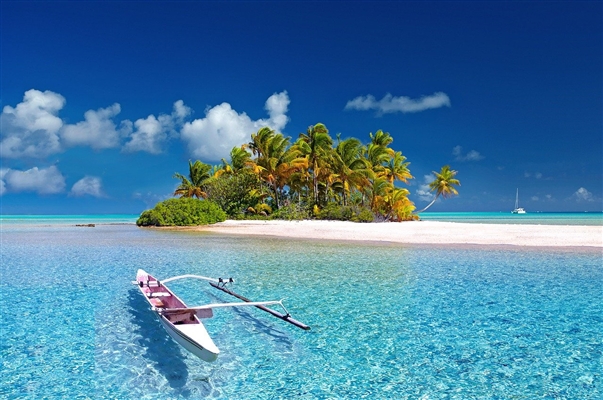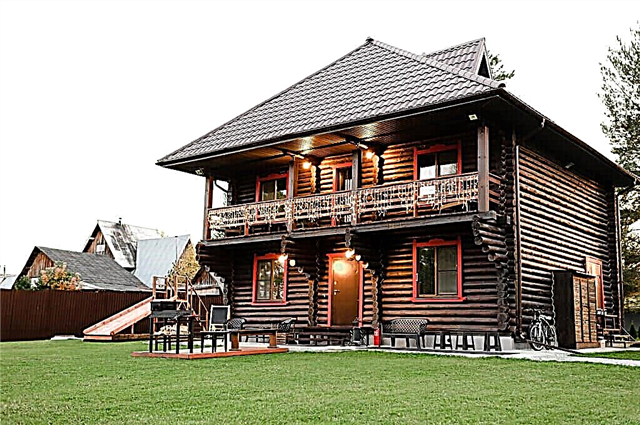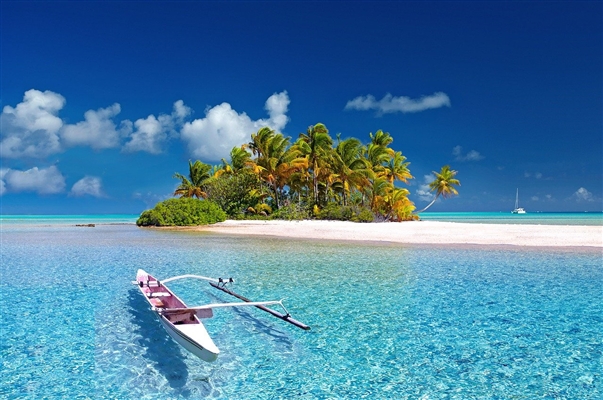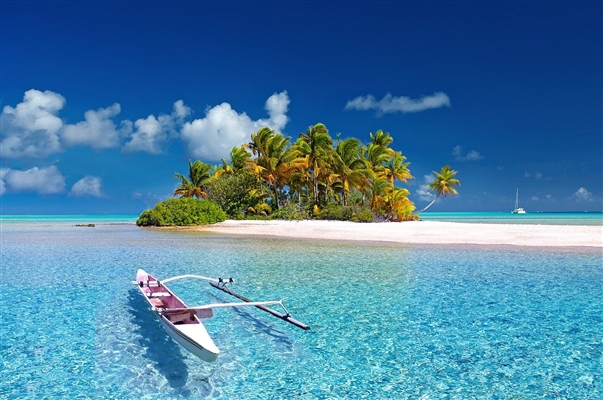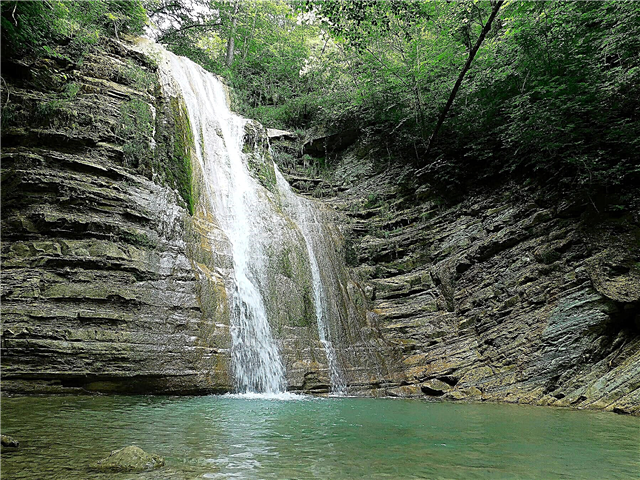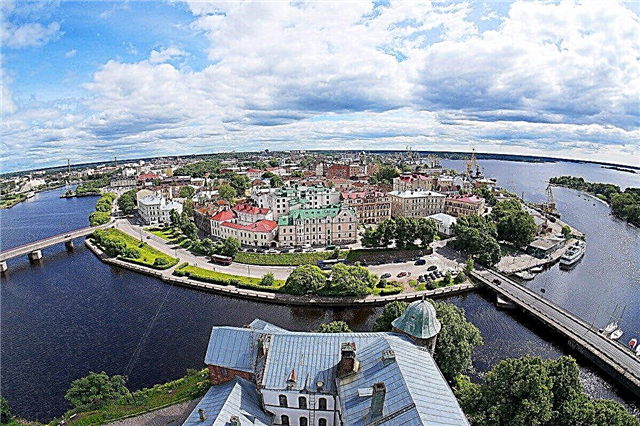The cities of the Leningrad region are as rich in interesting sights as St. Petersburg. The first settlements appeared before the beginning of our era. During the Middle Ages, forts and fortresses were built in the border towns. Since the 17th century, reigning families have been building luxurious residences and castles in the region, some of which were designed by famous architects from Italy.
Ancient churches and monasteries attract pilgrims. And do not forget about the stunning nature of the region - lakes, waterfalls, reserves. It is not so easy to build a route for exploring cities. Some cities, such as Vyborg or Gatchina, will take several days to fully explore all the interesting places. And cities such as Tikhvin or Otradnoye are suitable for weekend itineraries.
The largest cities of the Leningrad region
List of the largest cities in terms of population in the region.
Gatchina
Valuable historical monuments of the largest city in the Leningrad Region are associated with the reigning persons. Tourists come to see the residence of the three emperors - the large Gatchina palace, which is part of the palace and park ensemble of Gatchina. Count Orlov, the favorite of Catherine II, began to build the palace. Of interest for tourists are the Priory Palace, the Pavilion of Venus.
Population - 93 thousand people.

Vyborg
Built on the shore of the Vyborg Bay. It is interesting for its sights, monuments of architecture and history of the XIV-XVII centuries, uncharacteristic for typical Russian architecture. It was part of Finland until the middle of the 20th century. The style of Northern Europe is reflected in the towers and fortresses, paving stones on the roads and facades of the city's buildings. The main architectural and historical monument is the Vyborg Castle.
Population - 74,054 people (2021).

Vsevolozhsk
Attracts tourists with a variety of objects for inspection. The sights of the city are represented by monuments of military history and memorials, parks and gardens, architecture. The annual festival "Sabantuy" is of interest for tourists. The Cat Museum is considered an interesting museum. Literature lovers visit the Priyutino estate, where AS Pushkin and A. Griboyedov visited and worked.
Population - 74 thousand people.

Pinery
It received the status of a city in 1973. Residential buildings are located among a forest of century-old pines, from which the city got its name. The basis of the city's industry is atomic energy enterprises. Despite the fact that the history of the city is small, there is something to see - the Naval Museum, the Koporskaya fortress, the Krasnaya Gorka fort, the Chapel of St. Nicholas the Wonderworker.
Population - 68 thousand people.

Tikhvin
The earliest information about the city is documented in 1383. Wooden buildings typical of the northern type in the historical part of the city attract tourists. Of the traditional attractions, the Assumption Monastery and the Vvedensky Convent are distinguished. They were founded by order of Tsar Ivan the Terrible in 1560. In the 17th century, the walls of the monasteries served as a defensive function.
Population - 58 thousand people.

Sertolovo
It got its name from the village of Sirotala, which was located here in the 16th century. Most of the residents are military personnel and their families. Several training military units are located in Sertolovo. Of the cultural objects, interesting to visit is the wooden church of St. Sergei of Radonezh, as well as memorials and monuments to the heroes of the Great Patriotic War and even an ostrich farm.
Population - 54 thousand people.

Kirishi
Founded in 1693. Most of the sights are dedicated to the events of the Great Patriotic War. A memorial monument dedicated to the Decembrists Bessuzhev was erected in the city; the village of Kirishi was part of their family estate. You can relax in nature near the Volkhov reservoir. The local institute of the oil industry financed the construction of the Church of the Nativity of the Blessed Virgin Mary.
Population - 50 thousand people.

Kingisepp
The city is located near the border with Estonia. The history of the city began in the XIV century with the construction of the Yam fortress, and the city was called Yamburg. The city has beautiful architectural and religious sites. According to the project of Antonio Rinaldi, the Catherine Cathedral was erected in 1782. Unique exhibits of the life and life of the city's indigenous peoples can be viewed in the local history museum.
Population - 45 thousand people

Volkhov
Founded in 1918 from the village at the railway station. The steam locomotive monument running to besieged Leningrad along the "Road of Life" from Volkhovstroy station is a must-see for tourists. 26 monuments of wooden architecture are presented in the Vitoslavlitsy Museum. The first hydroelectric power station in Russia is also curious, and any excursion around the city begins with the house-museum of its engineer G.O. Graftio.
Population - 44 thousand people.

Tosno
Grew up from a small settlement in the 17th century owned by the Swedes. Hikers will be interested in the Sablinskie Caves, as well as the waterfalls of the Sablinka and Tosna rivers. The English park in the Maryino estate is a pleasant place for walking. The cultural part of the city is represented by the Tosno Art Gallery and the Tosno Local History Museum.
Population - 36 thousand people.

Meadows
The small town is known for its natural attractions. Experienced diggers-guides take tourists to the Kropovskie Caves. In the landscape reserve Cheremenetsky unique tree species are represented, animals from the Red Data Book live. Fans of outdoor activities can ride ATVs and motorcycles on a professional motorcycle track, and in winter on snowboards and downhill skiing.
Population - 35 thousand people.

Slates
Various excursions are presented for tourists. Pilgrimage excursions are laid through temples and holy places, for example, the route includes a visit to Ivan's Stream and the Olgin's Cross. The cognitive program includes an acquaintance with the local history museum, as well as with industrial enterprises - the Molodist garment factory, the Polymer and Petersburg ceramics factories.
Population - 32 thousand people.

Kirovsk
The military past is represented by a large number of attractions - a monument to the Baltic soldiers, the Mass Grave. Tanks from the battlefield, diorama and other objects are in the museum-reserve with the name "Breaking the Siege of Leningrad". Of the non-military attractions, the symbol of Kirovsk - Kiryusha the elk calf stands out. In 2011, a sculpture of the Janitor was installed by the city's management companies.
Population - 26 thousand people.

Gratifying
In the picturesque places of this city, many noble and royal persons built their own residences and estates. So, the estate of Pele was owned by Catherine II. During the Great Patriotic War, most of the city's buildings, including historical monuments, were destroyed. In the vicinity, the most visited places are the Ivanovskie rapids at the mouths of the Svyatka and Tosna rivers.
Population - 25 thousand people.

Kommunar
The area of the city is 12.8 km². Kommunar is called the "unknown suburb" of St. Petersburg, despite the fact that it is part of the Leningrad region. There are no iconic landmarks in it. The main city-forming enterprises are the mills of the pulp and paper industry. Since Soviet times, the largest enterprise has been the Leningrad Cardboard and Printing Plant.
Population - 22 thousand people.

Nikolskoe
It was named after the icon of St. Nicholas the Wonderworker. In 1718, the chapel, which originally housed the icon, was reconstructed into the wooden church of St. Nicholas the Wonderworker. Currently, this church is the main attraction of the city.The Nikolsk Military History Museum "Valor" is known as a place for military-historical reconstructions.
Population - 22 thousand people.

Pikalevo
Founded on the site of an ancient settlement. Previously it was known as the Pikalev Wasteland. The main sights of the city are concentrated in the center. These are the Churches of the Resurrection of the Word and the Exaltation of the Life-giving Cross of the Lord, the local history museum. Every year the festival "Russian Courtyard" is held, dedicated to the folk art of the North-West region.
Population - 19 thousand people.

Lodeinoe Pole
Leisure for tourists is quite varied. Tourists come to this quiet provincial town to see the ancient monasteries. Buildings of pre-revolutionary architecture are interesting in the central part of the city. At the Petrovskaya shipyard, you can participate in the construction of wooden ships. At the beginning of autumn, a festival with an interesting theme is held - it is dedicated to the porcini mushroom.
Population - 19 thousand people.

Priozersk
At different times the city was Finnish, Karelian, Russian. Sights of the heritage of different cultures are the Lutheran Church, the monument to Peter I, the Korela fortress. It is worth walking along the shores of Lake Vuoksa and visiting the famous Ladoga Lake. And from the Valaam pier, motor ships deliver tourists to the holy island of Valaam.
Population - 18 thousand people.

Podporozhye
The main attractions are dedicated to the events of the Great Patriotic War - the monument to the Mothers of War, the alley of heroes, the Bratskoe Cemetery memorial. It will be interesting to visit the tourist village of Verkhniye Mandrogi, where they organize hunting and fishing. There is also a moose fur farm and various museums - Crafts settlement, a vodka museum and others.
Population - 16 thousand people.

Svetogorsk
There is a border point with Finland nearby. In the city park of culture and recreation, you can rent a bicycle for a trip to Finland. But the city itself has something to see. For example, the rock of love, about which a sad legend is composed. And in a historical mansion built at the end of the 19th century, there is a recreation center Lesogorskaya estate.
Population - 15 thousand people.

Boksitogorsk
Interesting for its architecture. For example, the Palace of Culture, built by the architect K. N. Bartoshevich. The city hosts unusual festivals every year. Cheese Day is a celebration of Veps culture. Rock Jam is a youth festival for fans of rock music. An interesting exposition about the main industrial facility of the city of Boksitogorsk Alumina Refinery is presented at the Center for History and Culture.
Population - 15 thousand people.

Shlisselburg
The city is interesting for those who are interested in history. Fortress Oreshek is a monument of fortification architecture of the Middle Ages. She played an important role in both the Northern War and the Great Patriotic War. From the beginning of the 18th century to the middle of the 20th century, the fortress was used as a prison for political prisoners. It was called "Russian Bastille". It can only be reached by water.
Population - 14 thousand people.

Syasstroy
Founded on the banks of the Syas River in the middle of the 16th century. Swimming in this river is prohibited, but kayaking along it is considered a popular entertainment. On Lenin Street there is the Church of the Assumption of the Blessed Virgin Mary. The money for its construction was allocated by the merchant Savva Yakovlev and the son of Peter I, Tsarevich Alexei. The city-forming enterprises are paper and pulp mills.
Population - 12 thousand people.

Volosovo
Small town with an area of 8 km². It received the status of a city only in 1999. But already on the maps of 1676 there is the village of Volosovo, which was developed after the construction of a railway next to it in 1870. Almost all the old estates were destroyed during the Soviet era. The water tower, built in the pre-revolutionary times, is of interest for viewing.
Population - 11 thousand people.

Ivangorod
The city is included in the border zone. To enter it, you need to have a pass, or present a passport with a local residence permit. The city can be admitted if you have a passport. Tourists come directly to Ivangorod to inspect the Ivangorod fortress. The fortress was founded in 1492 to protect against the invasion of the troops of the Livonian Order.
Population - 10 thousand people.

New Ladoga
The city has a lot to see. You can take a long look at the old stone buildings located in the historic center. The Nikolo-Medvedsky Monastery, erected in the 14th century, has been well preserved. The great past of the Ladoga military flotilla is reflected in the memorial in honor of the Road of Life. Part of it is a ship that took part in the battle for Sukho Island.
Population - 8 thousand people.

Kamennogorsk
Founded in 1597. Near the city were found hunting tools and utensils of people who lived on this territory in the IV-III centuries BC. e. The city is located among picturesque lakes on the banks of the Vuoksa River. Until 1939, the city in the status of a village with the name Antrea was part of Finland. In memory of the former name, a memorial park "Antrea" was arranged.
Population - 6 thousand people.

Primorsk
The city stands out for its location on the Gulf of Finland. This attracts tourists to it, because there are no special attractions in it. But any tourist will be happy to see the 60-meter high neo-Gothic church. It contains an organ donated by Emperor Nicholas II. Currently, two organizations are located in the church - a local history museum and a house of culture.
Population - 5 thousand people.

Lyuban
In Lyuban there is the main railway church of the country - the Temple in the name of the Holy Apostles Peter and Paul. The Lyuban station is located in the middle of the railroad between Moscow and St. Petersburg. That is why it was chosen as the site for the installation of the memorial to the builders who worked on the Nikolaev railway. The famous K.A.Ton became the architect of the temple project.
Population - 4 thousand people.


